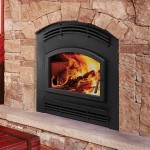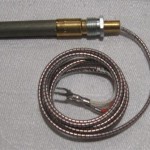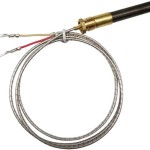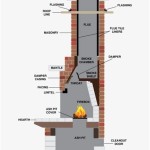Painting Brass Fireplace Doors: A Comprehensive Guide
Brass fireplace doors, while once considered a hallmark of elegance, can often appear dated or clash with modern interior design aesthetics. Painting these doors offers a cost-effective and relatively simple way to update a living space, transforming a drab fireplace into a stylish focal point. However, achieving a professional and durable finish requires careful preparation, the right materials, and a methodical approach.
This article provides a detailed guide on how to paint brass fireplace doors, covering everything from surface preparation to paint application and curing. It emphasizes the importance of each step and offers practical tips for ensuring a long-lasting and visually appealing result. Successfully painting brass fireplace doors involves more than simply applying a coat of paint; it's a process of meticulously preparing the surface to ensure proper adhesion and selecting the appropriate products to withstand the high temperatures associated with fireplaces. Failure to properly prepare the surface or choose suitable paint can lead to peeling, bubbling, and ultimately, a disappointing outcome.
Surface Preparation: The Foundation of a Lasting Finish
The most critical aspect of painting brass fireplace doors is proper surface preparation. Brass, by its nature, is a non-porous metal, making it difficult for paint to adhere properly. Without thorough preparation, the paint will likely chip, peel, or scratch easily. This section outlines the necessary steps to create a surface that will promote optimal paint adhesion.
The first step is to thoroughly clean the brass surface. Years of accumulated soot, dust, and grime can create a barrier preventing paint from adhering. Use a strong degreaser specifically designed for metal surfaces. Apply the degreaser according to the manufacturer's instructions, paying close attention to areas with heavy buildup. Rinse the surface thoroughly with clean water and allow it to dry completely. Ensure all traces of the degreaser are removed, as any residue can interfere with the subsequent priming and painting process.
Following cleaning, the next crucial step is to roughen the surface of the brass. This can be achieved through sanding. Use either a fine-grit sandpaper (around 220-grit) or a sanding sponge. The goal is not to remove the brass entirely, but to create microscopic scratches that will provide a "key" for the primer to grip onto. Sand the entire surface evenly, paying particular attention to corners and edges. After sanding, thoroughly remove all sanding dust with a tack cloth or a damp cloth. Allowing dust to remain on the surface will compromise the adhesion of the primer and paint.
In addition to sanding, consider using a chemical etching primer for brass. These primers contain chemicals that react with the brass surface, creating a strong bond at the molecular level. This is particularly beneficial for brass items that are difficult to sand thoroughly or have intricate designs. Apply the etching primer according to the manufacturer's instructions, ensuring even coverage. Allow the primer to dry completely before proceeding to the next step. Some etching primers may require a specific dwell time on the surface before being wiped away or neutralized; always consult the product's label.
Masking is another essential component of surface preparation. Use painter’s tape to carefully mask off any areas that should not be painted, such as glass panels, hinges, or decorative features. Ensure the tape is firmly adhered to the surface to prevent paint bleed. Consider using a plastic drop cloth or newspaper to protect the surrounding area from overspray or drips. Precise masking contributes significantly to a professional-looking finished product.
Selecting the Right Paint and Primer: Withstanding the Heat
Choosing the appropriate paint and primer is paramount for a successful and long-lasting result when painting fireplace doors. Regular paints are not designed to withstand the high temperatures generated by a fireplace and will likely fail, resulting in peeling, cracking, and discoloration. This section focuses on selecting heat-resistant products that can endure the thermal stress associated with fireplace use.
For primer, specifically look for a high-heat primer designed for metal surfaces. These primers are formulated to bond strongly to metal and provide a stable base for the topcoat. Some high-heat primers also offer rust-inhibiting properties, which can be beneficial for preventing corrosion on the brass surface. Apply the primer in thin, even coats, allowing each coat to dry completely according to the manufacturer's instructions. Multiple thin coats are preferable to a single thick coat, as they promote better adhesion and prevent runs or drips. Ensure the primer is fully dried and cured before applying the topcoat.
The topcoat, or paint, must also be heat-resistant. High-heat aerosol paints specifically formulated for stoves, grills, and fireplace accessories are the ideal choice. These paints are designed to withstand temperatures up to several hundred degrees Fahrenheit. Carefully read the product label to ensure it is suitable for the intended use. Consider the desired finish, such as matte, satin, or gloss, and choose a paint that offers the preferred aesthetic. Like the primer, apply the paint in thin, even coats, allowing each coat to dry completely. Avoid applying too much paint in one coat, as this can lead to sagging, runs, and an uneven finish.
When selecting a color, consider the overall design scheme of the room. Neutral colors, such as black, gray, or bronze, are often popular choices for fireplace doors as they tend to blend well with various interior styles. However, bolder colors can also be used to create a statement piece. Before committing to a specific color, consider testing it in an inconspicuous area to ensure it complements the surrounding décor. Remember that dark colors tend to absorb more heat than lighter colors, which may affect the performance of the fireplace.
Beyond heat resistance, consider the durability and ease of cleaning of the paint. Fireplace doors are prone to accumulating soot and dust, so choose a paint that is easy to wipe down. Some high-heat paints are also resistant to scratching and chipping, which can help extend the lifespan of the paint job. Always follow the manufacturer's recommendations for cleaning and maintenance to ensure the longevity of the finish.
Application and Curing: Achieving a Flawless Finish
The application of the primer and paint significantly impacts the final appearance and durability of the painted fireplace doors. Proper technique and attention to detail are crucial for achieving a smooth, even, and long-lasting finish. Furthermore, the curing process is equally important, as it allows the paint to fully harden and develop its heat-resistant properties. This section provides detailed instructions on how to apply the paint and primer effectively and how to properly cure the painted doors.
When applying the primer and paint, use smooth, even strokes. Hold the spray can approximately 8-10 inches away from the surface and overlap each stroke slightly to ensure complete coverage. Avoid spraying too close to the surface, as this can lead to runs and drips. Conversely, spraying too far away can result in a rough, textured finish. Practice your spraying technique on a piece of cardboard before applying the paint to the doors to get a feel for the spray pattern and distance. Consistent trigger pressure is essential for achieving an even coat.
Apply multiple thin coats of primer and paint rather than one thick coat. This allows each coat to dry properly and promotes better adhesion. Allow each coat to dry completely according to the manufacturer's instructions before applying the next coat. Typically, a minimum of 24 hours drying time is recommended between coats. Rushing the drying process can result in a soft, tacky finish that is prone to damage. Examine each coat carefully for any imperfections, such as runs, drips, or dust particles, and address them before applying the next coat. Using a fine-grit sandpaper to lightly sand out any imperfections between coats can help create a smoother final finish.
After the final coat of paint has been applied, the curing process begins. The curing process allows the paint to fully harden and develop its heat-resistant properties. Follow the manufacturer's instructions for the recommended curing time and temperature. In some cases, the paint may require heat-curing, which involves gradually increasing the temperature of the fireplace over a period of several hours. This can be achieved by starting a small fire and gradually increasing its size, or by using a heat lamp. Monitor the painted surface closely during the curing process and watch for any signs of blistering or peeling. If any issues arise, discontinue the curing process and allow the paint to cool completely before attempting any repairs.
If the paint manufacturer does not provide specific curing instructions, a general rule of thumb is to allow the paint to air-cure for at least 72 hours before exposing it to any heat. After the initial air-curing period, gradually introduce heat to the painted doors over a period of several days. This can be done by starting small fires and gradually increasing their size. This gradual approach allows the paint to adapt to the heat and minimizes the risk of damage. Avoid building large, intense fires immediately after painting, as this can cause the paint to blister or peel.
Once the paint has fully cured, carefully remove the masking tape. Use a sharp utility knife to score along the edge of the tape before peeling it away at a 45-degree angle. This will help prevent the paint from chipping or peeling along the edges. Inspect the finished product for any imperfections and touch up any areas as needed. With proper preparation, application, and curing, the painted brass fireplace doors will provide years of beauty and functionality.

Fireplace Door Update With Spray Paint Roots Wings Furniture Llc

Fireplace Door Update With Spray Paint Roots Wings Furniture Llc

How To Spray Paint A Brass Fireplace Bright Green Door

Brass Fireplace Makeover Remodel Brick Home

How To Spray Paint A Brass Fireplace Insert Erfly House

Brass Fireplace Update East Coast Creative

How To Paint A Brass Fireplace Screen Addicted 2 Decorating

How To Update Fireplace Brass

Some Like It Hot Centsational Style

How To Spray Paint A Brass Fireplace Insert Inserts Update
Related Posts








